STRATEGY GUIDE: What are the possible race strategies for the United States Grand Prix?

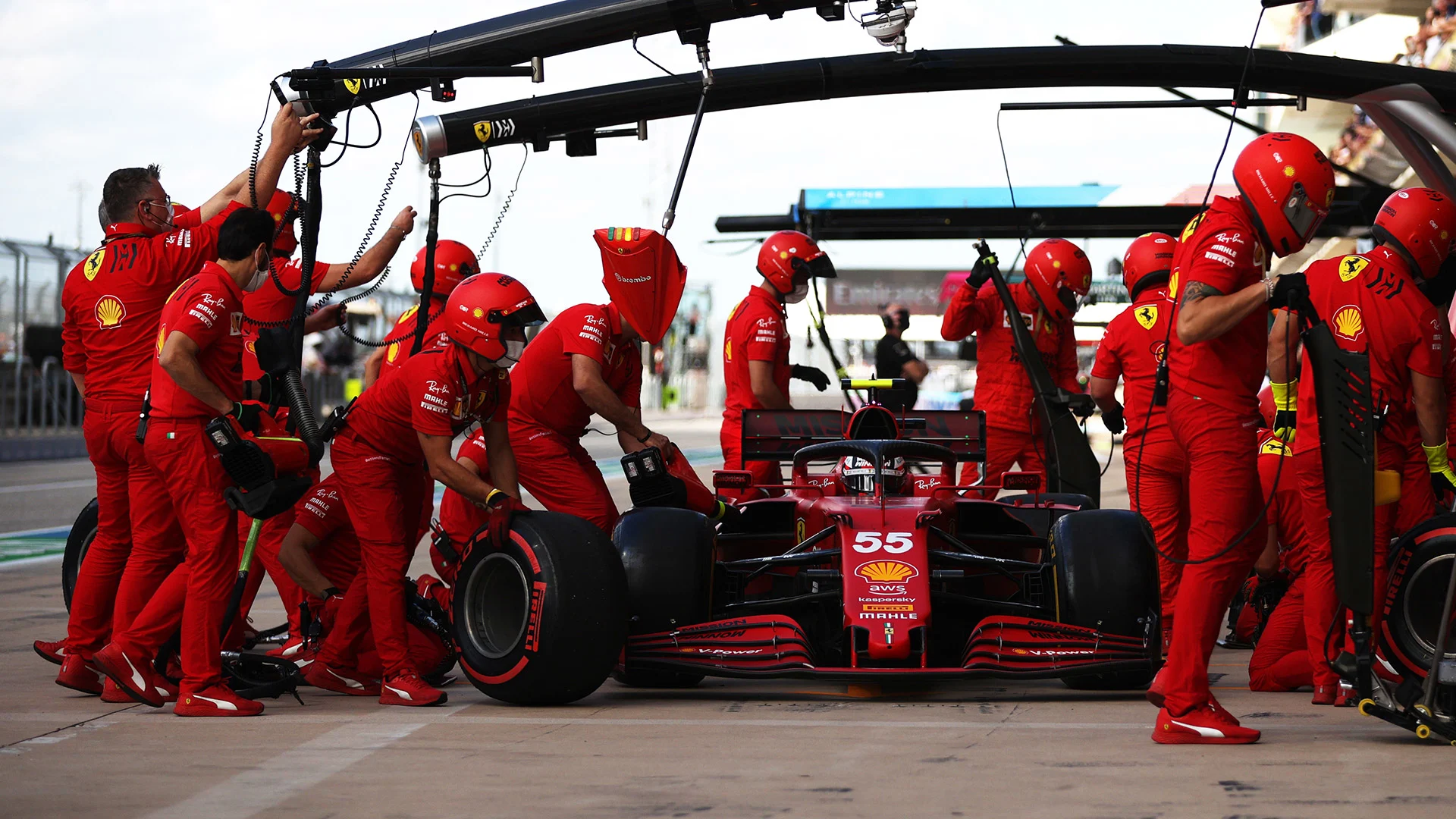
Higher than expected Texas temperatures have led to a tougher challenge than the teams thought they would be facing this weekend, so let’s take a look at the different strategic options that are on the table ahead of today’s race at Circuit of the Americas…
What are the likely strategies for the frontrunners?
Arriving in Austin, the expectation was that a one-stop strategy would be the target for many teams, with an aggressive two-stop also an option. But early in the weekend the teams noticed higher deg-radation levels than predicted and responded quickly.
READ MORE: Verstappen pips Hamilton to pole position with sensational final lap in Austin
So with the top four on the grid – along with the majority of the top ten – all starting on the medium compound tyre, there is some flexibility, but the picture has changed.
A two-stop strategy is now the far more likely option, with drivers using the medium for anything from 10-18 laps before two stints on the hard compound of equal length. Starting on the medium gives the most flexibility, because if enough management can be achieved without sacrificing too much race pace, then a one-stop is also possible.
For that to work, drivers will be looking at a first stint of around 25 laps, leaving more than 30 to do on the hard compound to the end of the race. However, there’s less of a disadvantage making an extra stop at COTA due to the pit entry being on the inside of the final corner, leading to a relatively low pit lane loss time of 20 seconds.
While Max Verstappen and Lewis Hamilton on the front row have both options available, Sergio Perez only has one set of hard tyres left so he will either need to commit early to the one-stop or be open to a final stint of around 10 laps on the softs.
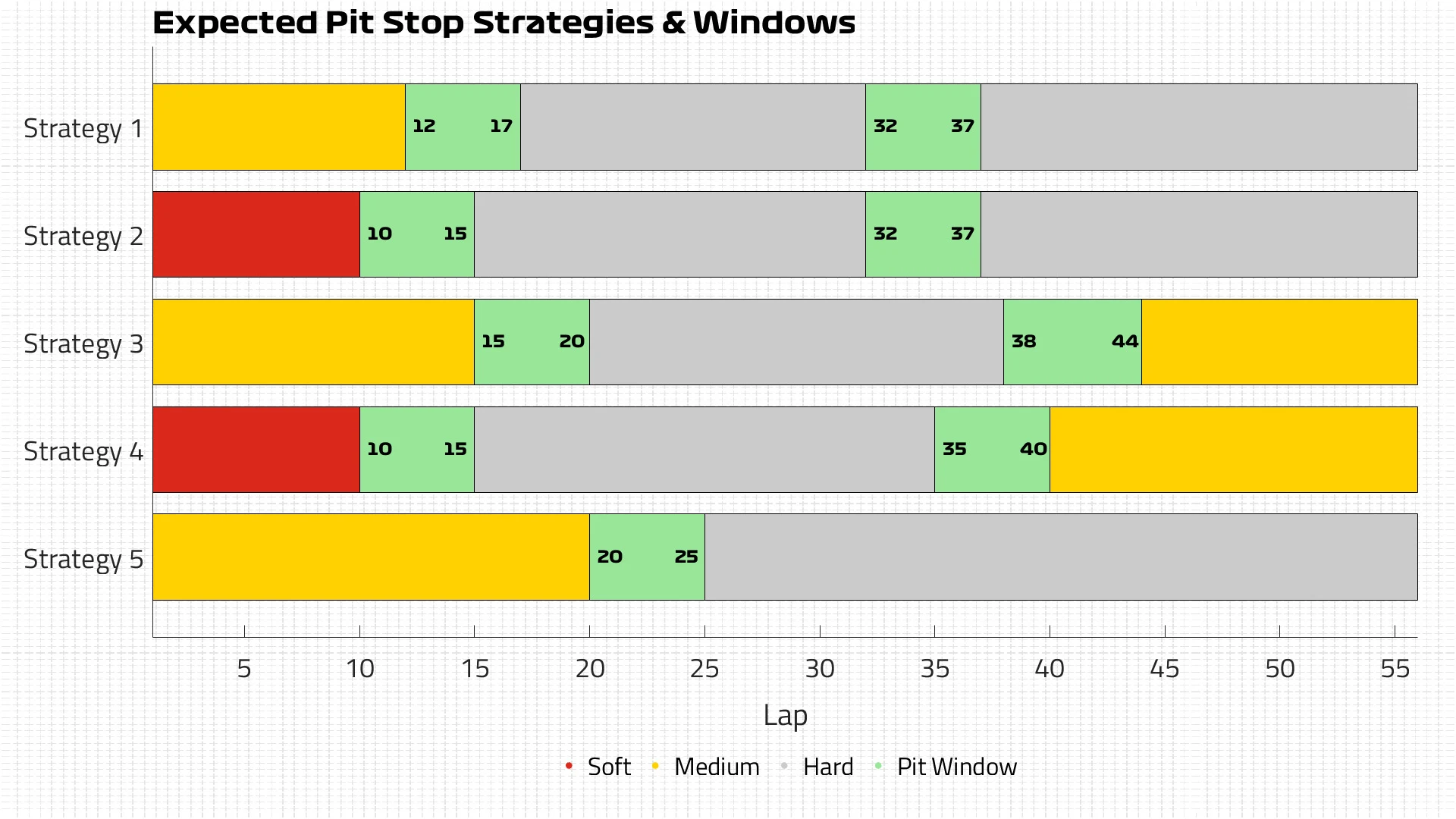
How about the rest of the top 10?
Perez is the only driver in the top ten who doesn’t have two sets of hard tyres available to him for the race, but he’s still in a strong position by starting on the mediums. Two other drivers in the top ten have gone for a different approach, with Carlos Sainz starting fifth and Yuki Tsunoda tenth on the softs.
By starting on this compound, both are fully committed to a two-stop strategy already, as there is no possibility of extending the first stint long enough to reach the end of the race on the hards. But both Sainz and Tsunoda have two sets of hard tyres available to them, so they are able to almost mirror the strategy of those starting on the medium.
Reaching lap 10 will be the target for the Ferrari and AlphaTauri pair, allowing two stints of around 23 laps each on the hards. They should also get a boost from the extra grip off the line and on the open-ing few laps before potentially struggling more towards the latter part of their opening stint.
However, if they can extend the middle stint to around lap 35, then a switch to mediums to the end of the race should be possible.
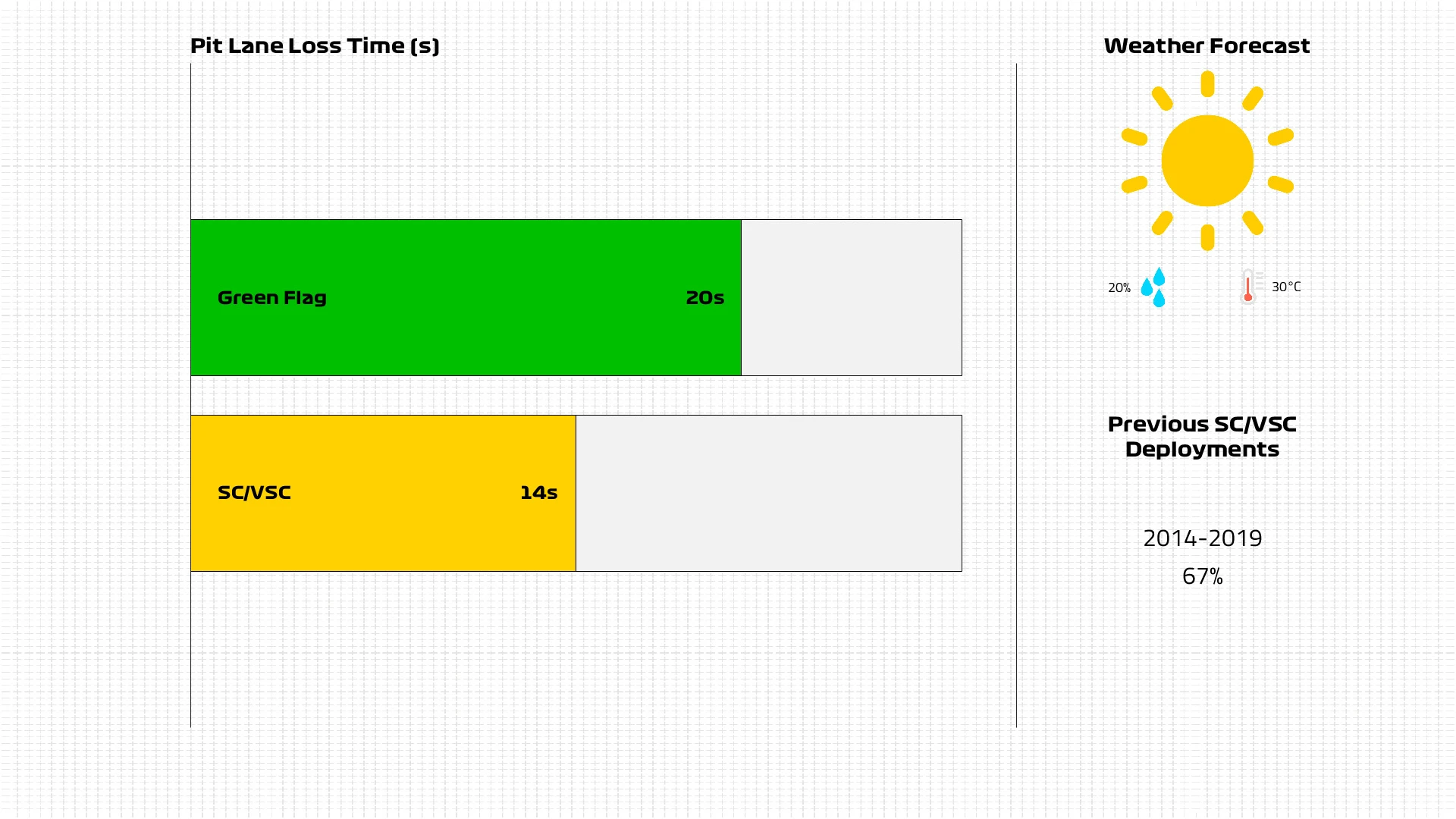
What are the options for the bottom half of the field?
The high temperatures in Texas this weekend are playing a part in the tyres overheating, and so it would be a major surprise if any of those outside the top ten with a free choice of starting compound opted for the softs. Instead, starting on the medium and switching to the hard opens up both the main strategic options, as well as the ability to return to the medium for the final stint if a driver doesn’t have two sets of hards.
That would likely be two stints of around 15 laps on mediums and a 26-lap stint on hards in the mid-dle, with the order important because it doesn’t give rivals any certainty that there will be a second stop, while either the medium or the soft could be used for the final stint.
What To Watch For in the United States GP: Front row fireworks and a Ferrari-McLaren ding dong
With the likes of Sebastian Vettel, Fernando Alonso and George Russell at the back after power unit penalties, we could also see some drivers opting to start the race on the hard compound. Warm-up isn’t such a big issue due to the temperatures, but the hard is much more stable and consistent, so would open up the opportunity to run long and get clear of traffic before switching to mediums around lap 25.
From there, the softs could be used for a 10-lap sprint to the finish. If degradation is too high then two stints on the medium is the likely choice, but depending on the middle stint length and the tyres available then the hard could also be used. The latter strategy is not an option for either of the Aston Martin, Alfa Romeo and Haas drivers, as well as Esteban Ocon as they all only have one set of hards left to use.
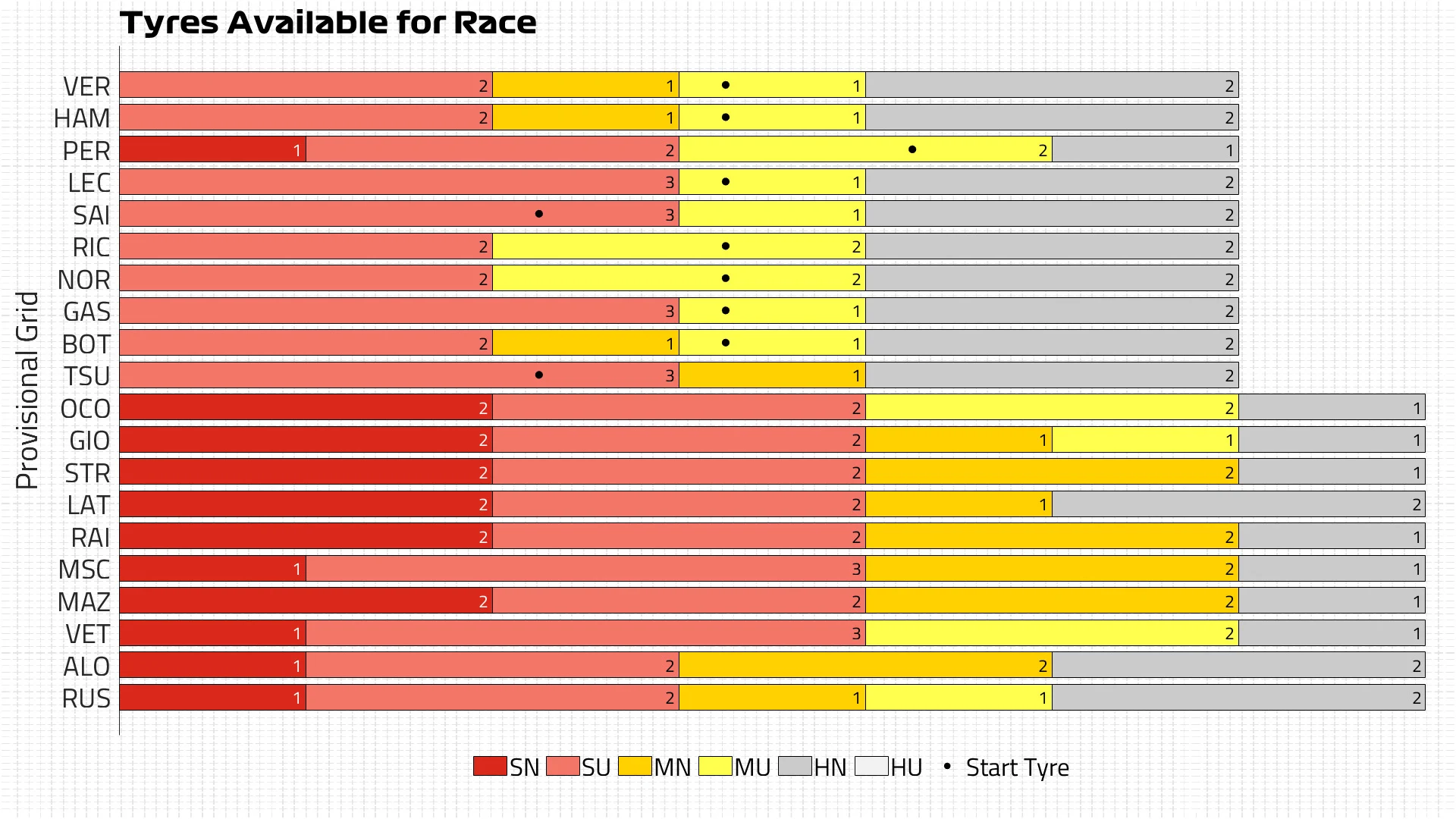
Wait, but what’s the weather doing?
The morning comes with a low chance of rain that is only reducing the closer to the race we get, but as Saturday showed that doesn’t mean wet weather can be ruled out. Towards the end of Q3 a shower unexpectedly formed near the circuit, leading to drops of rain for the final laps of qualifying.
What is more likely to be a challenge for all of the teams and drivers, however, is the temperature. The first two days of the race weekend have both seen temperatures in excess of 30C, and Sunday could well prove to be the hottest day of the lot. That’s because the race takes place at 1400 local time, two hours earlier than when qualifying was held and the temperature just started to drop.
HIGHLIGHTS: Watch all the action from qualifying for the US Grand Prix at COTA
That would lead to further challenges in terms of looking after the tyres, with overheating already an issue on both the soft and the medium. When the surface of the tyre overheats, the drivers are slid-ing around a lot more, which in turn means they are losing lap time.
It could prove to be relatively windy, too, with gusts of 30-40kph predicted at times that would also destabilise the cars when they lose downforce.
Next Up
Related Articles
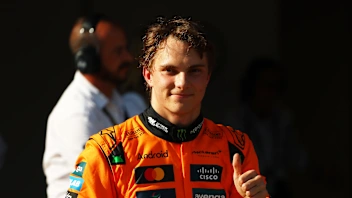 Piastri reveals lessons that will ‘only make me stronger’
Piastri reveals lessons that will ‘only make me stronger’ Tsunoda's best moments in F1 as he departs the grid
Tsunoda's best moments in F1 as he departs the grid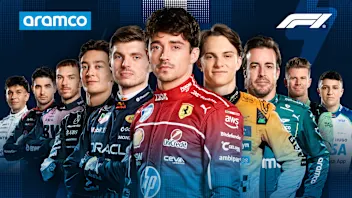 Power RankingsWho did our judges rank as the best F1 driver of 2025?
Power RankingsWho did our judges rank as the best F1 driver of 2025?.webp) VOTE: Choose your favourite race of the 2025 season
VOTE: Choose your favourite race of the 2025 season Beyond The GridThe best of 2025, from Norris’ evolution to Brad Pitt’s ‘need for speed’
Beyond The GridThe best of 2025, from Norris’ evolution to Brad Pitt’s ‘need for speed’ Sainz hopes point-less finish in Abu Dhabi ‘serves as a wake-up call’
Sainz hopes point-less finish in Abu Dhabi ‘serves as a wake-up call’